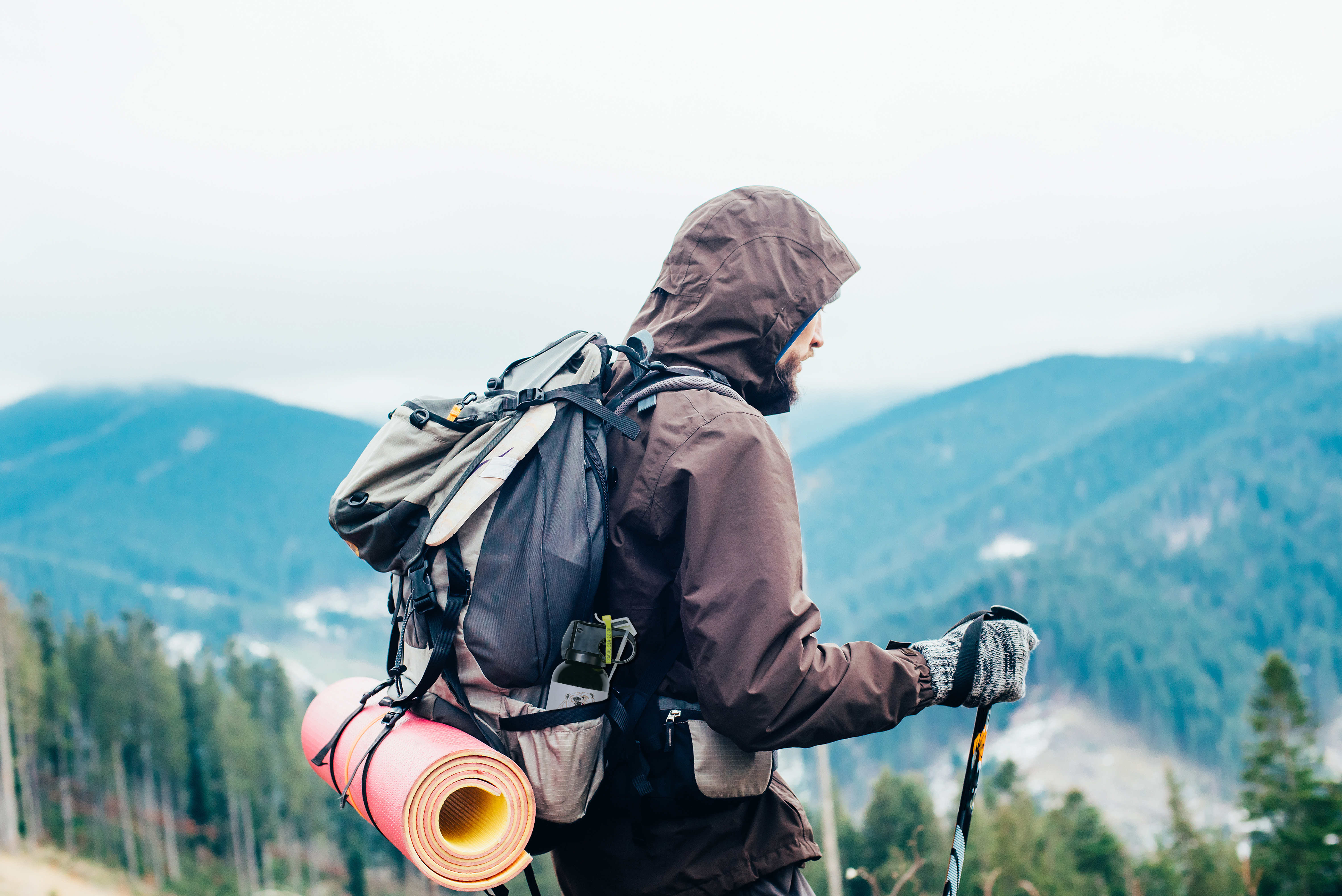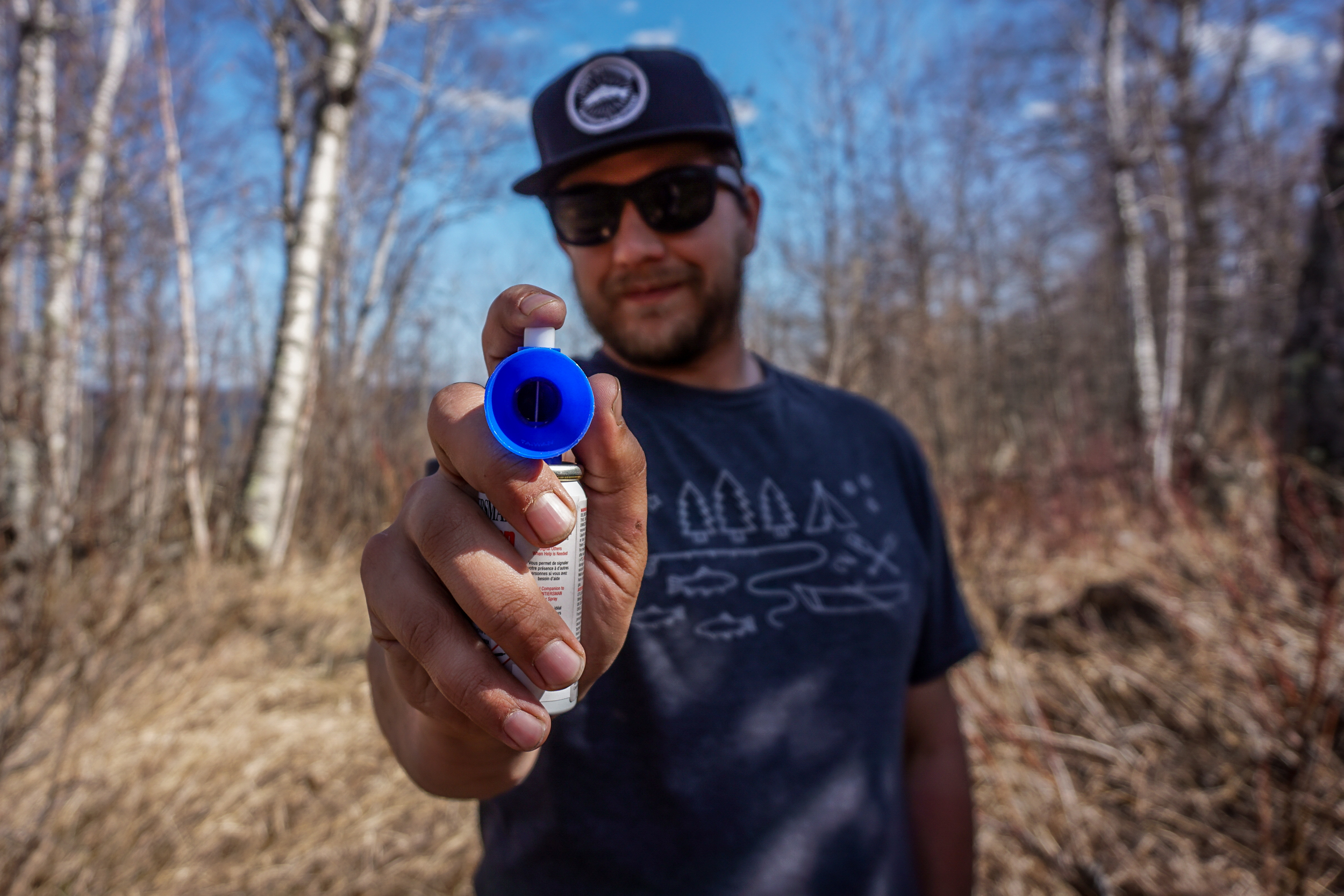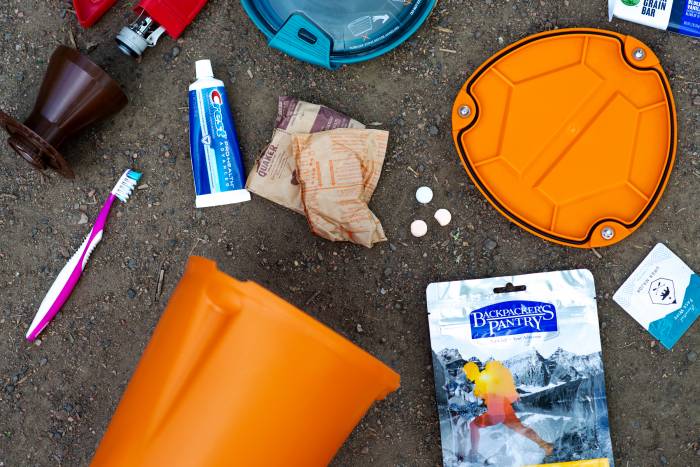Most of North America is bear country, predominantly territory for black bears. Your chances for a sighting a bear increase once you venture into the woods or backcountry.
Even if you’re familiar with bears, it’s important to understand their habits and the steps you can take to prevent unfortunate encounters. Here’s a briefing on bears, their behavior, and tips for your safety — and theirs.
Shop SABRE FRONTIERSMAN Bear Safety Products
Recognizing Bear Country
Habitat & Signs
Outside Alaska, there’s little brown bear territory that black bears don’t also inhabit.
Brown bears, also known as grizzly bears, live in Alaska and parts of Washington, Montana, Idaho, and Wyoming. Black bears, meanwhile, live in 41 states and throughout Canada.
Evidence of bear activity includes tracks, tree scratching, and scat (which varies wildly depending on their recent diet).
Identifying Bears
In general, brown bears are larger than black bears, though this isn’t the best identifier. Color is also an unreliable indicator because both can have cinnamon coats or dark-brown coats. Some subspecies of black bears can even be cream-colored (aka “spirit bears”).
Instead, facial shape and tracks help identify bear species. Brown bears have a telltale shoulder hump. On level ground, the hump is the highest part of the bear’s body. Black bears have a more rounded back, with no hump.
Brown bears have a rounded or “dished” facial profile, meaning their nose extends in front of its eyes and forehead. In contrast, a black bear’s face is flatter between its eyes and nose.
Bear tracks can help identify what bears are around. Typical black bear paw prints measure 5 inches in front and 7 inches in the rear. Brown bear tracks range from 6 inches in front to as large as 12 inches in the hind paws. Of note, bears often put their rear legs in front of their front legs, so hind paw prints will be in front of tracks.
Black bears have short, sharp claws, usually 4 inches long. Brown bears have broader claws that range from 5 to 10 inches in length. If you see tracks with claw prints several inches in front of the paw pad prints, you’re in brown bear territory.

What Do Bears Want?
Food. You knew that. Food is a bear’s primary interest, though, in more remote locations, bears can exhibit predatory behavior.
What you might not know, however, is that bears aren’t attracted by your flesh. Rather, they’re curious about the sunscreen, deodorant, and wild assortment of food scents you’ve brought into the wilderness. Once a bear finds an easy food source, it’s more likely to return. Wild animals survive on efficiency and will revisit easy targets.
First off, let’s get some perspective about bears. If you do encounter one, it will likely be an adrenaline-filled experience, but not a fatal one. Bears aren’t known for killing humans. The odds are far slimmer than being struck by lightning or drowning (the No. 1 cause of death in national parks).
That said, bear sightings are preferable to bear encounters — an important distinction. Part of bear safety is a concern for the bear, as those with repeated human contact are often put down as a precaution. So it’s best to reduce the chance you will ever interact with a bear; better to see them from afar.
How to Prevent a Bear Encounter
An interesting evolutionary biology take holds that black bears are timid due to having lived alongside North America’s former uber-predators, like dire wolves and sabertooth cats. They survived, in part, by running away and climbing trees.
But that doesn’t mean they won’t first make a show of aggression and, yes, sometimes act on it.
Shop the SABRE FRONTIERSMAN Bear HornMake Noise
So how do you avoid that? You can scare bears off by making noise (sorry, hunters) if they’re not already coming after you and are thus less inclined to investigate strange noises.
You can say “hey, bear” as you hike, especially when walking through tall brush where you’re less likely to notice a bear (and vice versa) until you’re dangerously close. Really, you can say anything loudly and directly.
Another option is to use bear bells. You can strap these to a backpack, belt loop, or shoe, and they’ll jingle as you walk. Plus, bells equipped with a magnetic silencer will keep them quiet when you want.
In noisier environments, like around rushing water or high-wind areas, you may want to revert to shouting and clapping. Or blast a safety horn every so often.
Pick a Campsite Less Traveled
Some backcountry trails are more remote than others, and beginners often camp at common waypoints suggested by guidebooks. That means local bears may know that area as one that provides occasional food and make it part of their territory when searching for food.
Surviving a Bear Encounter
Looking through bear attack reports, some scenarios trigger more aggression from bears.
Mountain bikers cover a lot of ground quietly. It’s a recipe for surprising a bear and its hunting behavior. After all, running or riding away looks like prey behavior to a bear.
You know the advice: Never get between a bear and her cubs. Well, bears don’t have the same courtesy toward humans.
A predatory bear may look for ways to attack small children or dogs that are away from a parent. It’s one reason to stand in a group when bears come close. It’s better to look like a herd than stray prey and more likely to induce bears to run away.
Let’s say despite all the “hey, bear” or bear bell prevention, you’ve still startled — or been startled by — a bear. How you react is very important and depends on the circumstances and even the type of bear.
No matter the bear, hold your ground and reach for your bear spray. If the bear is charging from within 60 feet, deploy your spray to create a cloud between you and the bear. Bears are fast and will close that gap quickly. If the bear is closer than 30 feet, say in your campsite, aim your bear spray at the bear’s face.
If, unfortunately, you don’t have bear spray with you, here’s what you need to know for an attack. A bear attack is a bad situation, and these are the best practices.
Black bear: Continue to hold your ground and use any sticks, rocks, or campsite objects to show your own aggression. Black bears are more inclined to flee than fight.
Brown/Grizzly bear: Curl into a ball with your backpack on and hands over the back of your neck. You can call this playing dead, but it’s protecting your vital organs and appearing non-threatening. The bear may turn to leave, but stay still. Brown bears have a habit of checking back to make sure things are safe (for them).
The hope is that you’ll never need to follow these steps. Bears are best enjoyed at a distance — and keep your bear spray at the ready just in case! To help prevent such close encounters of the Ursa kind, follow the safety tips above.
Being outdoors is all about being prepared and having a bear-deterrent pepper spray can provide safety and peace of mind.
Shop SABRE FRONTIERSMAN Bear SprayThis article is sponsored by SABRE, makers of FRONTIERSMAN Bear Spray. Shop SABRE FRONTIERSMAN Bear Safety Products here.










